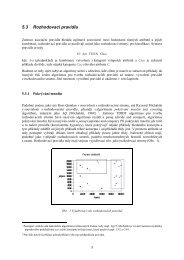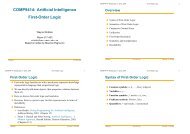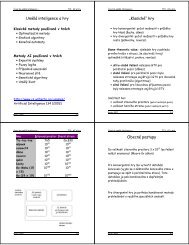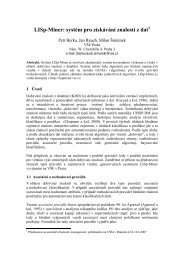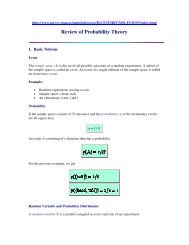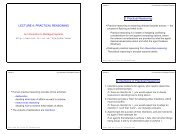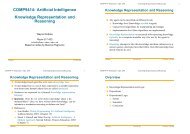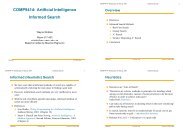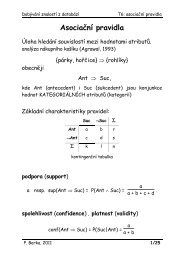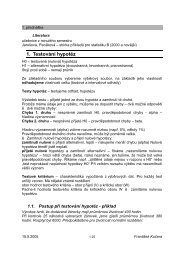Fuzzy Logic - Sorry
Fuzzy Logic - Sorry
Fuzzy Logic - Sorry
You also want an ePaper? Increase the reach of your titles
YUMPU automatically turns print PDFs into web optimized ePapers that Google loves.
AI Module<br />
Membership Function<br />
Membership function Maps elements of <strong>Fuzzy</strong> set<br />
to real numbered value in the interval 0 to 1<br />
For Core elements (x) =1<br />
For Support elements (x) > 0<br />
For Boundary elements (x) > 0<br />
but (x) ! =1<br />
Based on membership functions the fuzzy sets are classified<br />
into two types<br />
1) Normal <strong>Fuzzy</strong> set<br />
A set is one whose membership function has at least<br />
one element whose degree of membership is equal to<br />
one.<br />
APGDST<br />
© NCST, 2002 <strong>Fuzzy</strong> <strong>Logic</strong><br />
13<br />
AI Module<br />
2) Convex <strong>Fuzzy</strong> set<br />
Co<br />
Membership Function<br />
APGDST<br />
A Convex <strong>Fuzzy</strong> set is described by the membership function whose<br />
membership values are strictly monotonically increasing or whose<br />
membership values are strictly monotonically decreasing or whose<br />
membership values are strictly monotonically increasing and then strictly<br />
monotonically decreasing for increasing values of elements in the<br />
universe.<br />
Mathematical Expression:<br />
For any element x,y zin fuzzy set A,<br />
the relation x



